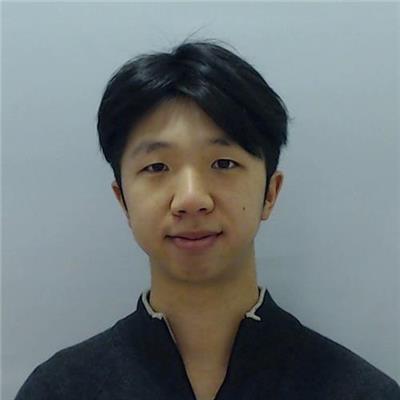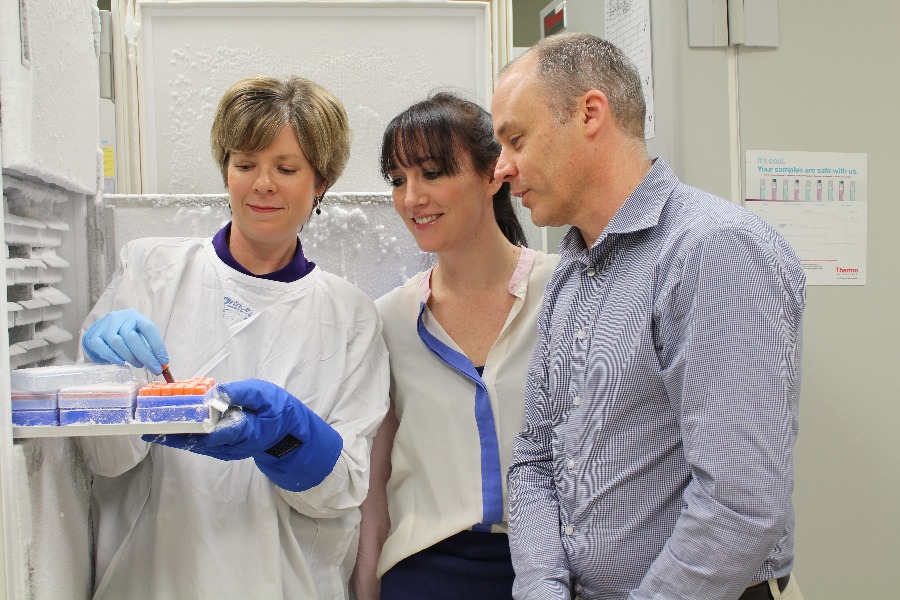Neuro-oncology
Our research aims to discover the gene regulatory networks controlled by Distal-less transcription factors in the developing brain and link them towards developmental reprogramming of specific children’s brain cancers.
Our laboratory is interested in understanding the molecular mechanisms that control the development and organisation of cells and tissues in the body with a specific focus on the brain and eye.
Our work focuses on a highly conserved gene family called Distal-less (Dlx) which is required for normal development and controls target genes that can contribute to children’s cancer growth. Dlx genes encode proteins called transcription factors which act like molecular switches to turn other genes “on” or “off”.
Our aim is to understand the gene regulatory networks that control and are controlled by Dlx genes.
In normal brain development, DLX2 is required for the development of a particular class of neurons called GABAergic interneurons that express the inhibitory neurotransmitter GABA. We have recently discovered that DLX2 is important in determining cell fate in the developing brain by promoting GABAergic interneurons and at the same time blocking oligodendroglial progenitor cell (OPC) differentiation to mature oligodendrocytes.
OPC cells are an important determinant in the most malignant childhood brain cancer called DMG (Diffuse Midline Glioma), a devastating cancer that is invariably fatal. We hope to discover the mechanisms that switch DLX on and off to enable us to turn off the OPC differentiation programme in order to find new treatments for DMG.
Our research combines advanced genomics technologies, and bioinformatic analysis with cell biology and biochemical signalling.
More information
Group Leaders

Group Members












Our projects

Children’s Cancer Centre Biobank
The Children’s Cancer Centre Biobank is a valuable collection of biological samples such as tissue collected during surgery, blood and bone marrow.
Read more...Linking transcriptional regulation of dorsal-ventral patterning during forebrain development to development of paediatric diffuse midline gliomas
The Distal-less homeobox (DLX) genes are required for neural differentiation processes in the developing forebrain. DLX2 is required for the differentiation and migration of GABAergic interneurons and represses the oligodendroglial fate of neural stem cells.
Our findings that DLX2 blocks oligodendroglial progenitor cell (OPC) differentiation provides a link between a key transcription factor in brain development to the malignant childhood brain tumour, Diffuse Midline Glioma (DMG) as these tumours are believed to originate from OPCs. This project aims to investigate the DLX2 gene regulatory networks in the developing brain in order to understand the role of DLX2 in DMG.
Linking determination of cell fate in the developing nervous system to paediatric brain tumours
Diffuse Intrinsic Pontine Glioma (DIPG), renamed Diffuse Midline Glioma (DMG), is a devastating malignant childhood brain tumour that is universally fatal. Recent work has shown that most DMG tumours (up to 80%) have mutations in Histone genes which result in altered regulation of gene expression, which can lead to aberrant cell fate decisions.
DMG tumours have been shown to resemble oligodendroglial progenitor cells (OPCs). Our work shows that DLX2 represses OPC differentiation. This project aims to study the role of DLX2 expression in DMG tumorigenesis in order to help unravel the mechanism leading to this type of tumour.
Developmental reprogramming of paediatric brain tumour cells
This project aims to study the role of DLX2 in DMG and high-grade glioma (HGG) patient-derived cell lines, in vitro and in genetically engineered mouse models (GEMM) and orthotopic xenotransplants in vivo. We will investigate changes in cell fate/differentiation, migration, invasion, proliferation and survival of cells following manipulation of DLX2 expression as well as the in vivo tumour microenvironment.
Enteric nervous system development and Hirschsprung Disease in children
Hirschsprung Disease (HD) is a severe disorder of the developing enteric nervous system (ENS) which can sometimes manifest as complete intestinal obstruction in the newborn infant requiring emergency surgery.
More than 30 per cent of patients with HD have loss-of-function mutations in the RET proto-oncogene or in other members of the RET signalling pathway.
Our recent studies have shown that DLX2 binds directly to the Ret gene promoter in vivo and regulates its expression in a proximal-distal fashion during ENS development. We aim to investigate DLX2 and RET expression in the developing ENS in mice and in patient samples assessed for HD.
Molecular regulation of DLX proteins
DLX proteins are transcription factors required for neural differentiation and migration in developing tissues. Our work has recently shown a link between DLX2 and the OPC differentiation program.
However, little is known about the molecular mechanisms that activate or block DLX function. Our research aims to discover new transcriptional and cell signalling regulatory mechanisms and characterise these at the molecular, biochemical and genomic levels in order to improve our understanding of the DLX family-mediated transcriptional regulation in normal development and in cancer.
Our research combines advanced genomics, transcriptomics and proteomics technologies, and bioinformatic analysis with cell biology and biochemical signalling.
Funding
- Royal Children’s Hospital Research Foundation
- Live for Lily Foundation
- Medical Research Future Fund (MRFF)
- Victorian Paediatric Cancer Consortium (VPCC)
Collaborations
- Victorian Paediatric Cancer Consortium (VPCC)
- Ron Firestein and Jason Cain, Hudson Institute of Medical Research
- Pouya Raridi, Joel Steele, Terry Lim, Hudson Institute, Monash University
Featured publications
Genetic Regulation of Vertebrate Forebrain Development by Homeobox Genes.Front. Neurosci. Leung RF, George AM, Roussel EM, Faux, MC, Wigle, JT, Eisenstat, DD (2022)
